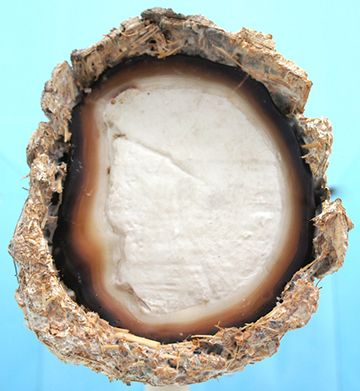Larry Bamburg’s latest body of work examines the arbitrariness of existence through a broad understanding of sculptural form and a nuanced reflection on artistic process. Bamburg sees the world as a collection of formal systems on the verge of failure, and his work is unified by several interconnected questions: what happens when chance is allowed to run its course; what is the relationship between artistic intention and the internal logic of each object; and what are the limits and possibilities of each material?
The work on view continues Bamburg’s interest in exploring the essence of sculpture: the animation of the inanimate. This is evident in the large brass and bone arches that elegantly demarcate the space. The bones, taken from a variety of fowl and arranged in ascending size, provide just enough weight to hold taut the gently cascading arch. Bamburg pushes the themes found in the arches in his work with living organisms. In three terrariums spaced throughout the room a wooden log is displayed in specifically designed vitrines. The logs are both dead and alive, a representation of life and actual life transforming before the viewer’s eyes. Bamburg carefully stripped the bark from the logs, replacing the original wood with a porcelain cast. He wrapped the stripped bark around the smooth surrogate, and then created an environment—a contained ecosystem where the humidity is nearly one hundred percent—in which mushrooms grow on the grafted bark.
The existential concerns of Bamburg’s art are shaped by his dual interest in formal systems and artistic agency. All of the works respond to an initial material condition and/or rule-based situation Bamburg establishes at the outset. He forces himself to follow the self-proscribed materialist dictate to its conclusion under the proviso that he extends himself to his physical, conceptual, monetary, and even moral limits. Hence, the greenish-blue color of a porcelain cast log leads Bamburg to seek out another material of the same color, which necessitates that he finds something else to compliment the previous choice. In these works there is no turning back, no place for revisions, once a system is in place Bamburg must follow it—at all costs—to the end.
This is especially true with the several wood, shell, and animal hooves stacks. Bamburg uses a variety of burls taken from redwood, maple, oak, and other kinds of trees. They visually define the stacks on view, which use balance, gravity, and at times mounts or leaning plinths to maintain their construction. Bamburg predetermines the height and subsequently devises a system that allows him to achieve his goal. The pieces require constant problem solving and ad-hoc thinking in order to make them come to fruition. They push a formal logic, however absurd in constitution, to its extreme, and search for a new understanding about what a certain shape or structure can do in a given situation. Every work in BurlsHoovesandShells exists on a knife-edge. The gap between failure and success, as with life, is determined by the eternal battle between one’s will and chance.
Larry Bamburg was born in 1974 in Houston, Texas. He lives and works in Brooklyn, New York. Selected exhibition include: UR, Room East, New York, NY (2012); It’s Endless Undoing, Thierry Goldberg Gallery, New York, NY (2012);Science on the back end, Hauser & Wirth, New York, NY (2012); Heel gezellig, GRIMM, Amsterdam, NL (2011); Bamberg (sic.), GRIMM, Amsterdam, NL (solo) (2011); And the fair Moon rejoices, Boston Center for the Arts, Boston, MA (2009); Hi, Low, and In Between, GRIMM, Amsterdam, NL (2009), Fruit Farm Film Festival 2008, McMinnville, OR (2008);Only Connect, Art in General at Bloomberg LP., New York, NY (2008). TBA:07, Portland Institute of Contemporary Art, Portland, OR (2007); Stubborn Materials, Peter Blum Gallery, New York, NY (2007); You Are Here, Ballroom Marfa, Marfa, TX (2005); Exit Biennial: The Reconstruction, Exit Art, New York , NY (2003).

























































































































